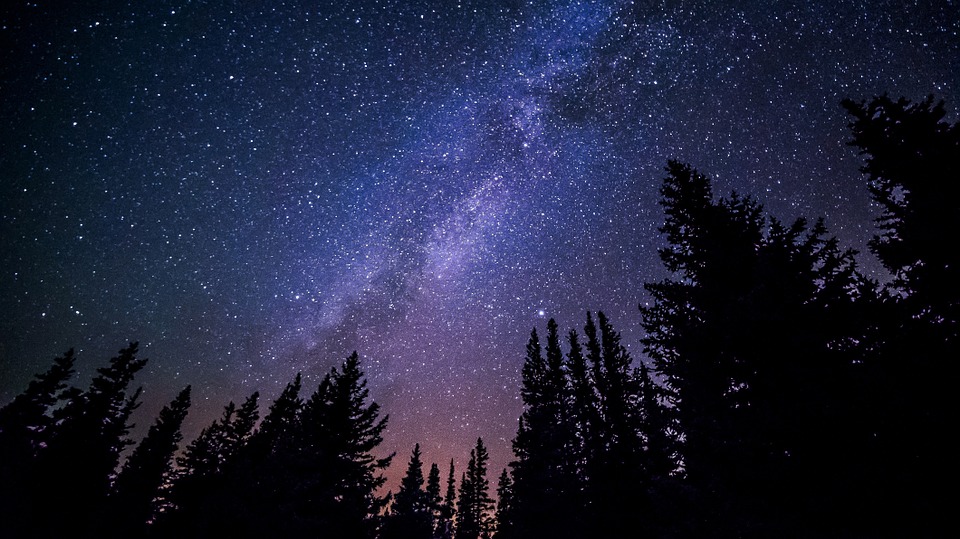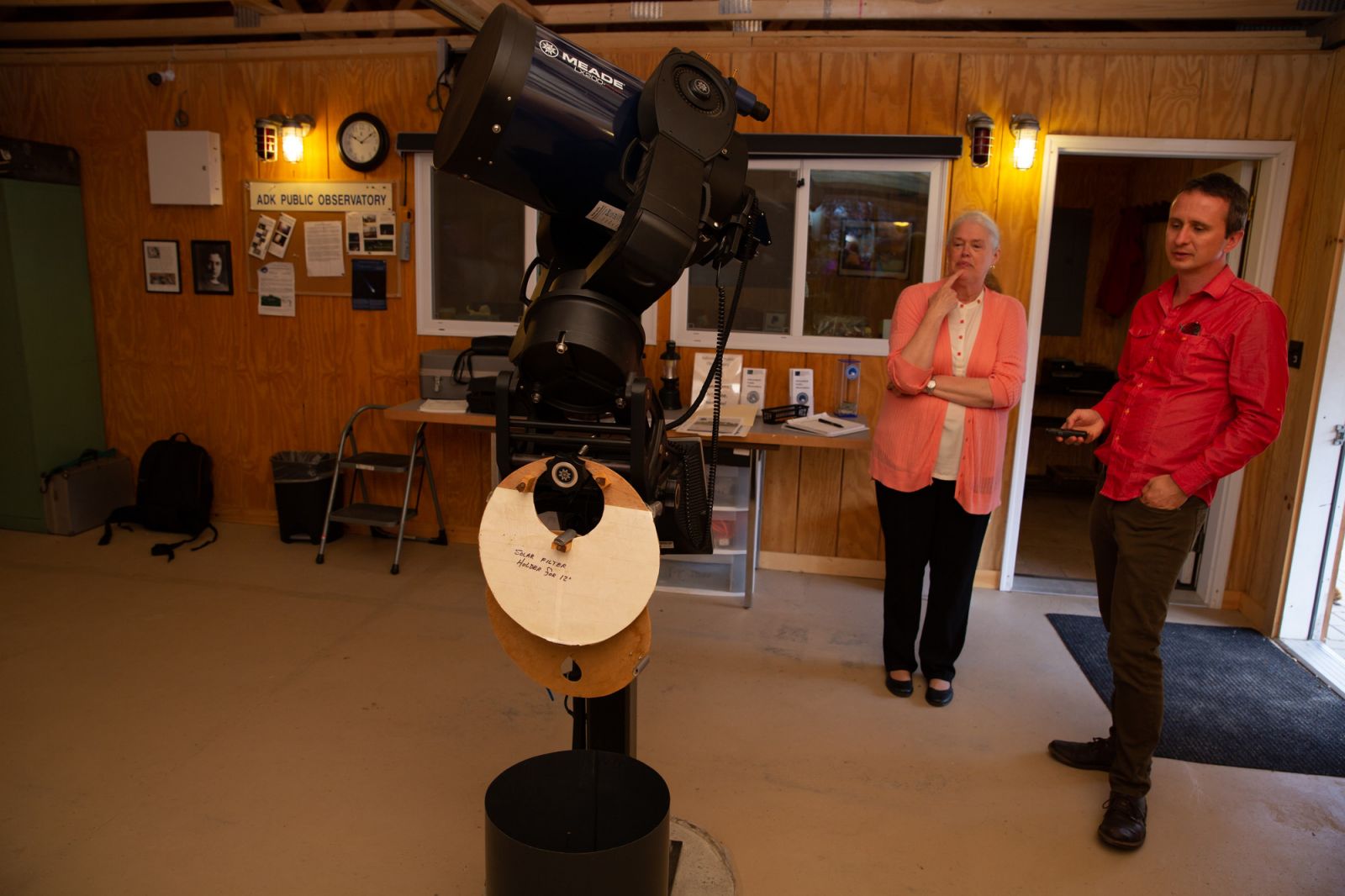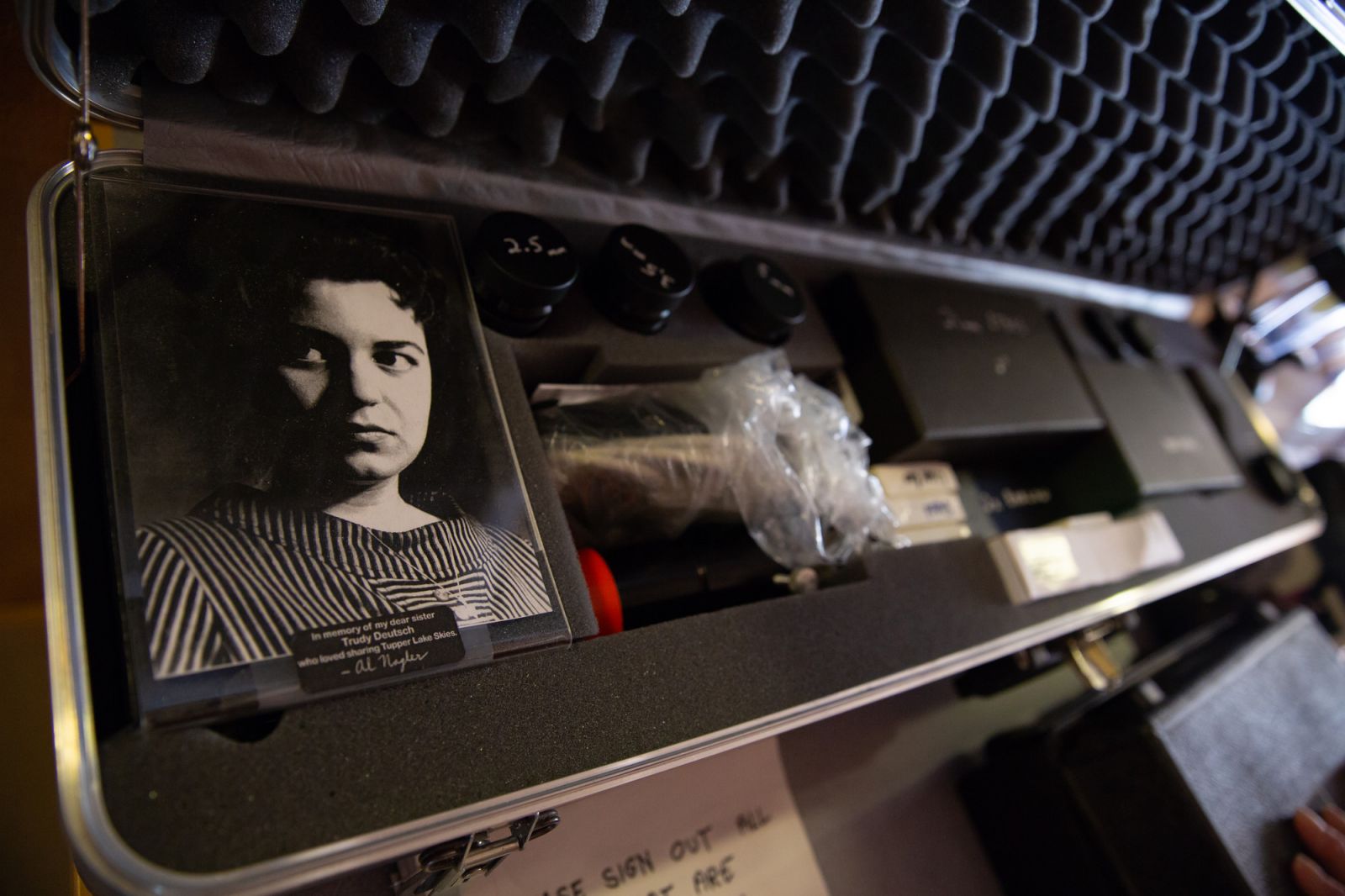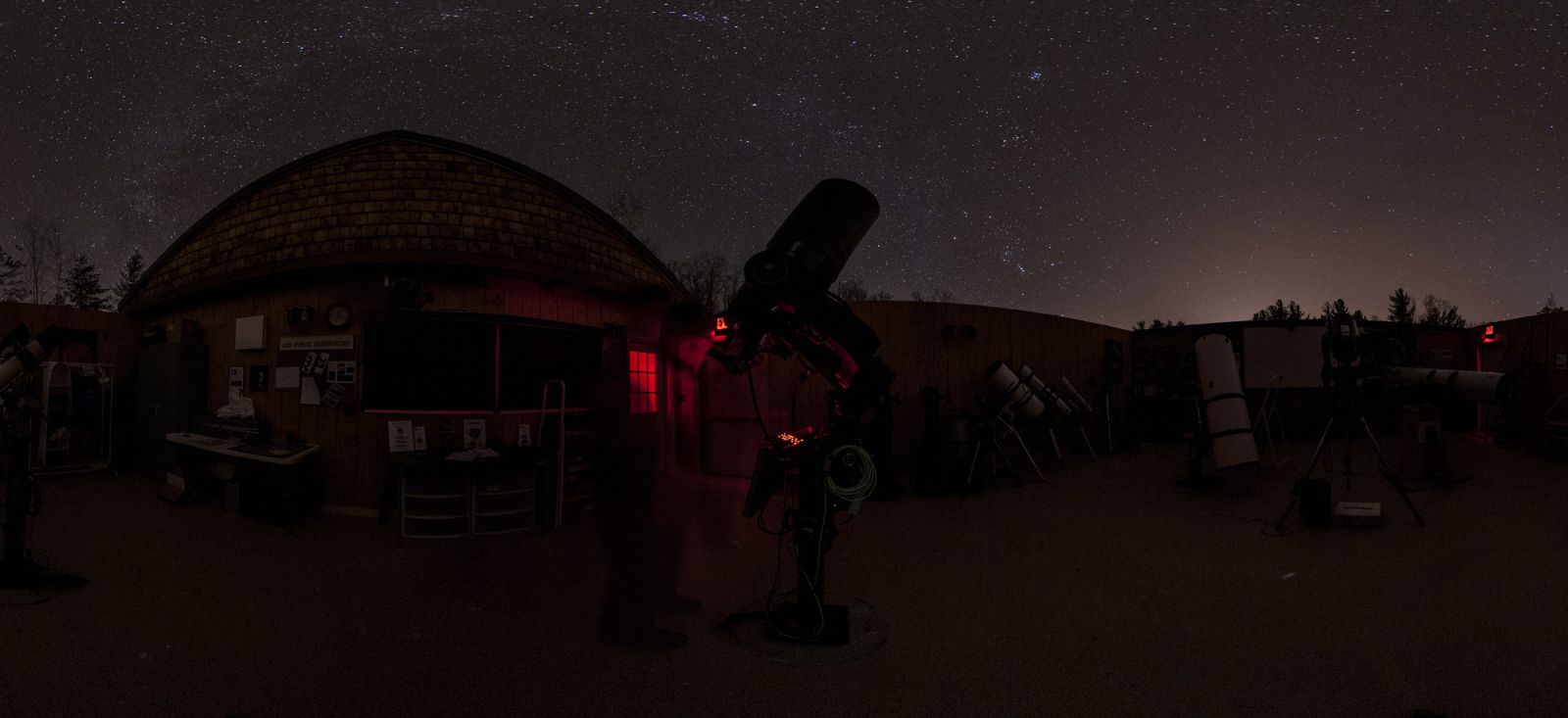
Discover the universe at the APO
Calling all astronomy buffs and outer space novices!
Every time the holidays roll around, my wife and I head to her mom and stepdad’s place in Fly Creek, New York, an aptly-named flyspeck on the map that’s home to a cider mill and lots of country roads. There are a couple of creeks there, too.
The routine there rarely varies: the days are spent visiting nearby Cooperstown or wandering the woods, and in the evening we help cook dinner and let the warmth from the wood stove lull us into competitive board gaming. It isn’t until later, long after the stars appear, that we venture outside to peer through her stepdad’s enormous telescope. An amateur astronomer, Rich points to hazy, faraway lights and names them. Sometimes they are stars or planets, sometimes they are entire galaxies. Entire galaxies. That part never ceases to amaze me, so much that I’m left pondering the vastness of it all daily.

And so my fasciation with everything unimaginably huge led me to the Adirondack Public Observatory, an incredible little place that brings visitors closer to the seemingly infinite sky above. APO office manager Mary Beth Joel gave me a tour of the place, and explained that Tupper Lake is an ideal location for an observatory. The skies here are dark, she said, in large part due to the village board agreeing to use more energy efficient street lamps that direct light down, so less is lost to the heavens. The observatory itself opened July 11, 2014, after a lot of planning and fundraising.
"Tupper Lake is one of the only dark sky areas in the northeast, unless you want to go up into Maine," Mary Beth said.
Inside the APO
Mary Beth led me into the main room, which has a roll-off roof for stargazing. Inside there’s a plethora of telescopes, including a new 14-inch that’s being used for astrophotography, a Televue scope named Trudy that's for looking at the sun, and a 12-inch that has a flat screen monitor mounted low on the stand, making it accessible to those in a wheelchair. There are also a bunch of smaller telescopes — small compared to the 14-incher, but no less impressive — that are brought outside for the observatory’s free stargazing parties, and there’s a 1925 Everest telescope on display called the Old Town Pump, which is slowly being refurbished.

“One of the first times I was here they showed me Saturn through one of the telescopes," Mary Beth said. “Actually being able to see the rings, to count them, it was like a photograph. It was perfect.”
That’s the point of the APO — to educate and, by default, amaze by teaching whoever’s interested about the universe. There are free talks throughout the year (an astronaut is on the agenda this summer) and there are afternoon programs for kids at the observatory’s main office on 36 High Street in Tupper Lake. The kids programs sound fun to me. The activities include robot building and origami.
The free stargazing sessions happen every Friday, just be sure to check their website or Facebook page first because they’re canceled if it’s cloudy. If you do go, expect to find experts on hand who can name objects in space, like constellations and those distant galaxies I mentioned before.

There’s plenty to see and do at the APO, but there’s a lot more in the works. Later this summer, ground will be broken on buildings for the rest of the campus. The goal is to have a planetarium, conference center, pendulum that shows the rotation of the earth, research observatory with a 24-inch telescope that can be accessed via the internet from around the world, and a real-deal science center for learning about outer space.
The APO is just as I expected, and now I’m planning a return trip during the evening hours to see it in action. It’s perfect for a date night, or a for a night cap after a day discovering the natural beauty of Tupper Lake with the kids. There’s plenty to see and do, and the price is right, too.
APO schedule and events
Lectures:
- June 15: Dr. Valerie Rapson, "We Love Pluto"
- August 10: Dr. Jeff Miller, "Perseid Meteor Showers and the Tears of St. Lawrence"
- Astrophotography Conference: October 11 - 14. Sign up on the APO website or through the office.
Free Friday afternoon classes for children age 8 and up are from 2-5 p.m. at 36 High Street in Tupper Lake. This is great for a rainy day!
Free Friday night stargazing begins around sundown in the summer. Check ahead, as this is weather dependent.
Private stargazing parties can be scheduled for $150 for up to 20 people. They are contingent on weather and availability of an astronomer (APO astronomers are volunteers).
The Perseid meteor showers will be at their peak in the northeast on Sunday, August 12.
Getting there
From Route 30 in Tupper Lake, turn onto Washington Street, take the fourth left on 4th Ave., then bear right on Wolf Pond Road. The APO is on the left, just past Little Wolf Beach.
